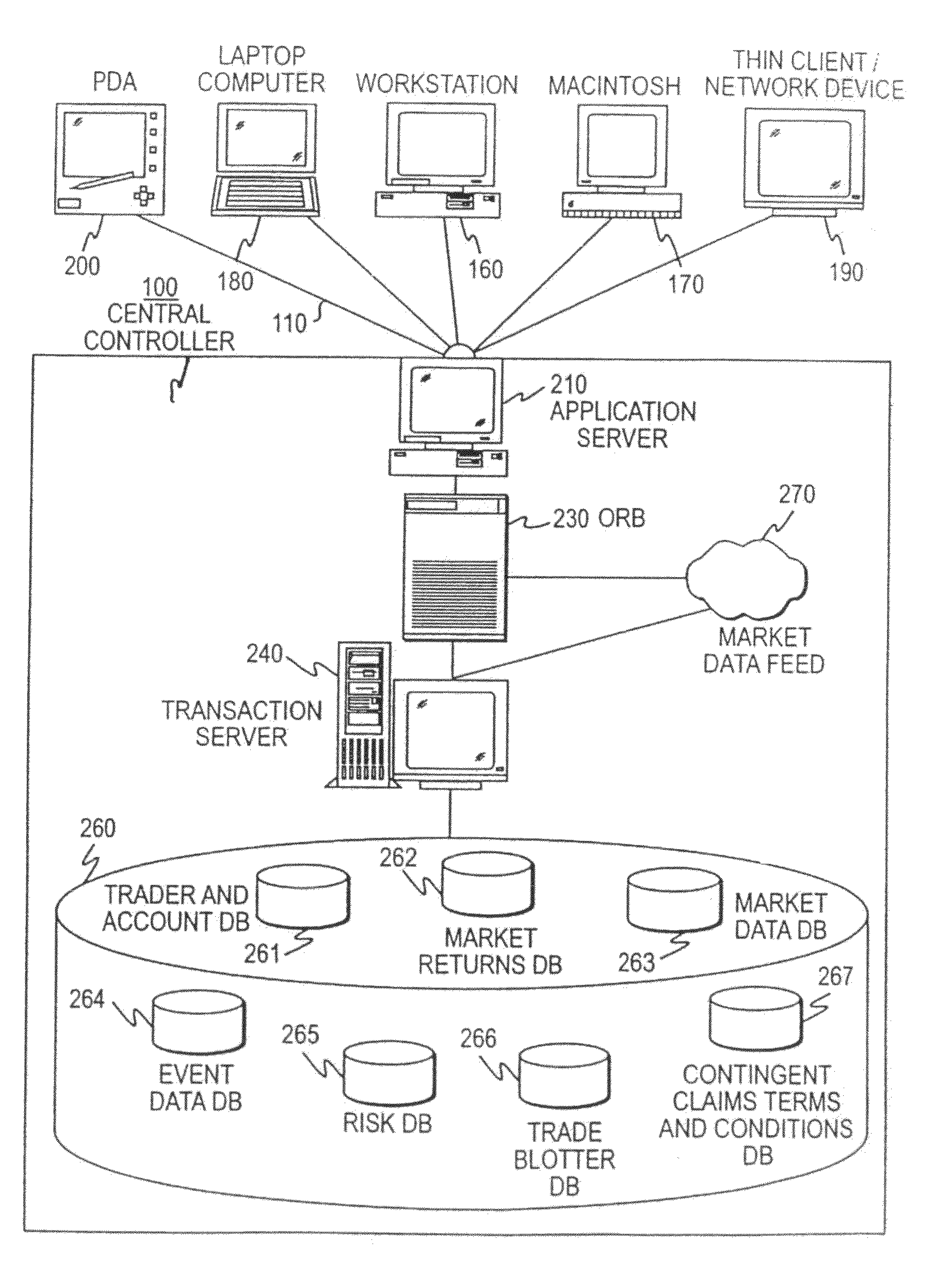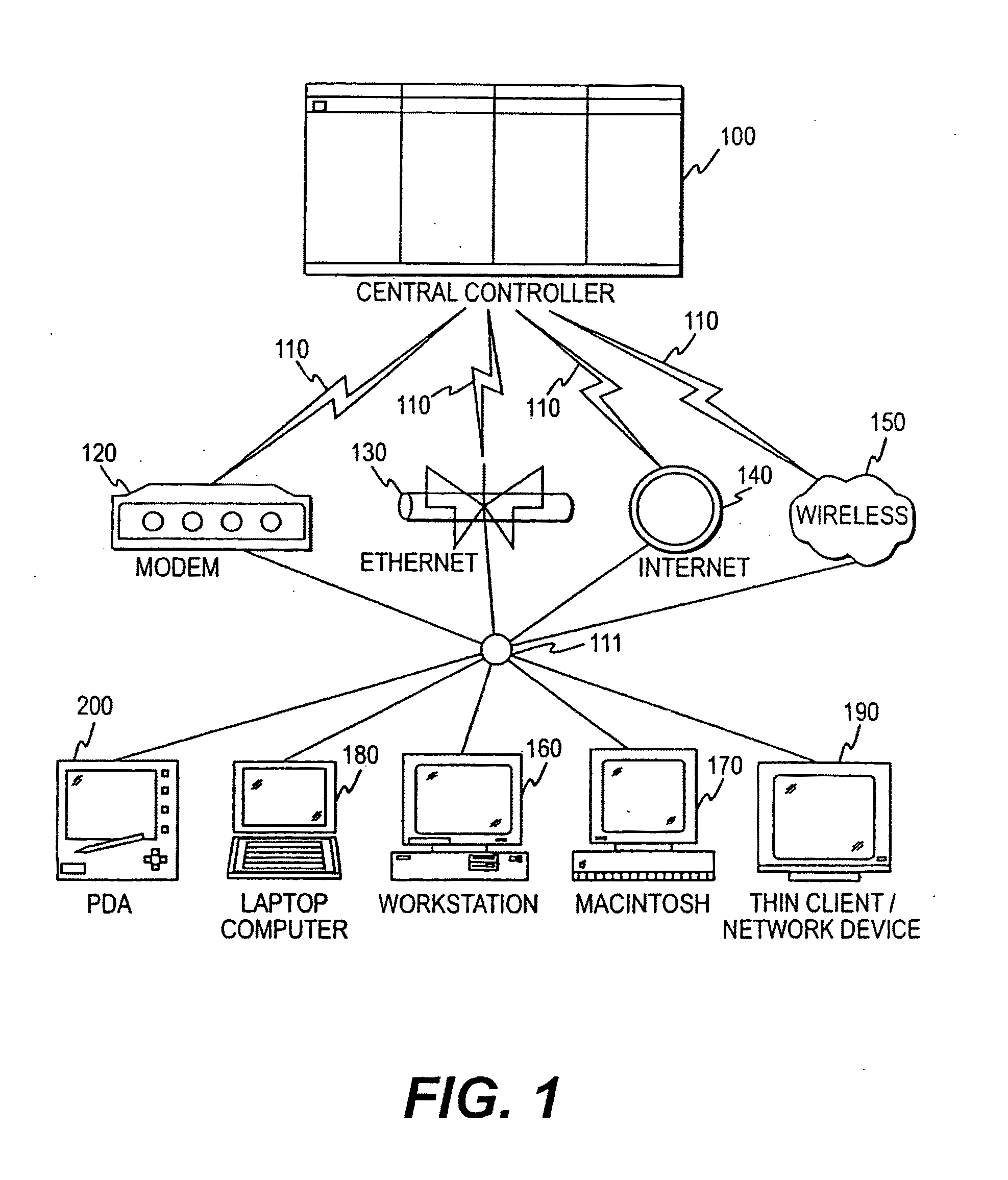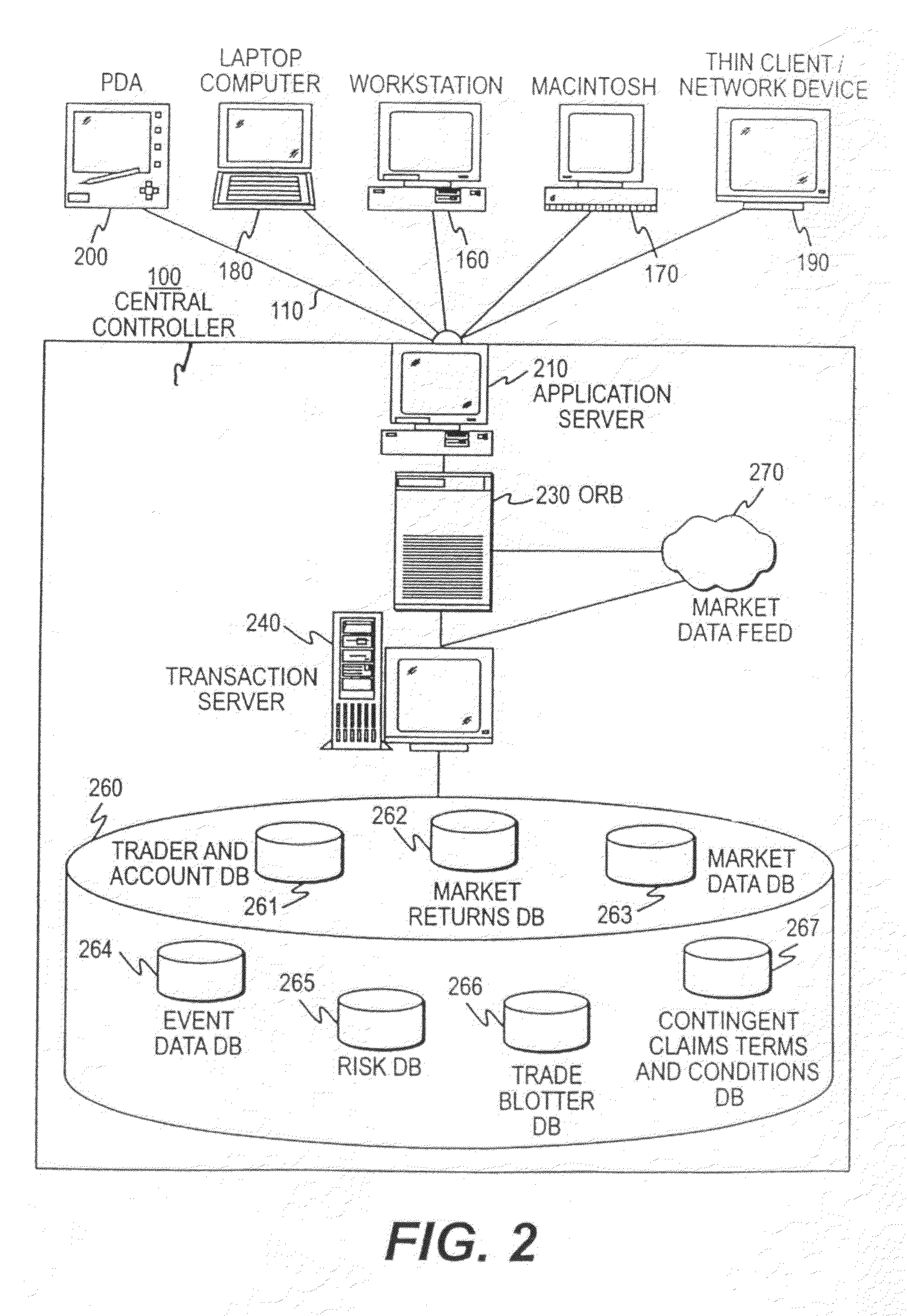Enhanced parimutuel wagering
a parimutuel and wagering technology, applied in the field of enhanced parimutuel wagering and gaming, can solve the problems of limited investment liability, significant credit risk likely to be caused, and information is not readily availabl
- Summary
- Abstract
- Description
- Claims
- Application Information
AI Technical Summary
Benefits of technology
Problems solved by technology
Method used
Image
Examples
example 3.1.1
DBAR Contingent Claim On Underlying Common Stock
[0403]Underlying Security: Microsoft Corporation Common Stock (“MSFT”)[0404]Date: Aug. 18, 1999[0405]Spot Price: 85[0406]Market Volatility: 50% annualized[0407]Trading Start Date: Aug. 18, 1999, Market Open[0408]Trading End Date: Aug. 18, 1999, Market Close[0409]Expiration: Aug. 19, 1999, Market Close[0410]Event: MSFT Closing Price at Expiration[0411]Trading Time: 1 day[0412]Duration to TED: 1 day[0413]Dividends Payable to Expiration: 0[0414]Interbank short-term interest rate to Expiration: 5.5% (Actual / 360 daycount)[0415]Present Value factor to Expiration: 0.999847[0416]Investment and Payout Units: U.S. Dollars (“USD”)
[0417]In this Example 3.1.1, the predetermined termination criteria are the investment in a contingent claim during the trading period and the closing of the market for Microsoft common stock on Aug. 19, 1999.
[0418]If all traders agree that the underlying distribution of closing prices is lognormally distributed with vol...
example 3.1.2
Multiple Multi-State Investments
[0429]If numerous multi-state investments are made for a group of DBAR contingent claims, then in a preferred embodiment an iterative procedure can be employed to allocate all of the multi-state investments to their respective constituent states. In preferred embodiments, the goal would be to allocate each multi-state investment in response to changes in amounts invested during the trading period, and to make a final allocation at the end of the trading period so that each multi-state investment generates the payouts desired by the respective trader. In preferred embodiments, the process of allocating multi-state investments can be iterative, since allocations depend upon the amounts traded across the distribution of states at any point in time. As a consequence, in preferred embodiments, a given distribution of invested amounts will result in a certain allocation of a multi-state investment. When another multi-state investment is allocated, the distr...
example 3.1.3
Alternate Price Distributions
[0433]Assumptions regarding the likely distribution of traded amounts for a group of DBAR contingent claims may be used, for example, to compute returns for each defined state per unit of amount invested at the beginning of a trading period (“opening returns”). For various reasons, the amount actually invested in each defined state may not reflect the assumptions used to calculate the opening returns. For instance, investors may speculate that the empirical distribution of returns over the time horizon may differ from the no-arbitrage assumptions typically used in option pricing. Instead of a lognormal distribution, more investors might make investments expecting returns to be significantly positive rather than negative (perhaps expecting favorable news). In Example 3.1.1, for instance, if traders invested more in states above $85 for the price of MSFT common stock, the returns to states below $85 could therefore be significantly higher than returns to s...
PUM
 Login to View More
Login to View More Abstract
Description
Claims
Application Information
 Login to View More
Login to View More - R&D
- Intellectual Property
- Life Sciences
- Materials
- Tech Scout
- Unparalleled Data Quality
- Higher Quality Content
- 60% Fewer Hallucinations
Browse by: Latest US Patents, China's latest patents, Technical Efficacy Thesaurus, Application Domain, Technology Topic, Popular Technical Reports.
© 2025 PatSnap. All rights reserved.Legal|Privacy policy|Modern Slavery Act Transparency Statement|Sitemap|About US| Contact US: help@patsnap.com



